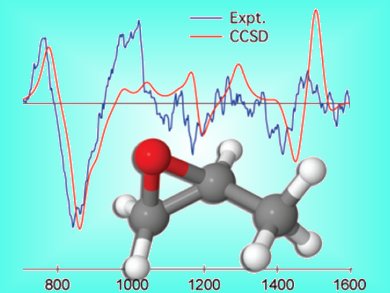Chiral Characterization with ROA
An international research team has described the first calculations of Raman optical activity (ROA) spectra using coupled-cluster theory – one of the most reliable quantum chemical methods available. ROA is a valuable tool for the structural characterization of a wide range of molecules, including large biomolecules such as viruses and proteins for which the technique holds a particular prominence. “We have developed the most advanced computer model to-date of the scattering of polarized light from chiral molecules”, says T. Daniel Crawford, Virginia Tech, USA, who carried out the simulations together with Kenneth Ruud, University of Tromsø, Norway. Chirality – or handedness – is a very important property in chemistry. The new results are presented in the journal ChemPhysChem.
A long-term goal of this area of research is to enable laboratory chemists to carry out their own simulations to study compounds ranging from small molecules to pharmaceuticals and viruses. “This will allow them to identify which ‘hand’ of the compound reacts in a desired way — from providing a certain scent to fighting tumors”, Crawford says. He points out that the model developed by him and his Norwegian colleague is capable of providing predictions of many molecular properties that equal — and sometimes exceed — the accuracy of even the best available experiments. Besides describing the fundamental theoretical aspects of the coupled-cluster functions used in the calculation of ROA spectra, Crawford and Ruud have demonstrated the effectiveness of their method through benchmark computations on (S)-methyloxirane — a compound for which experimental gas-phase data are available. Such rare experimental data, which are free of perturbative solvent effects, provide an excellent testing ground for advanced quantum-chemical methods.
Computational and Experimental Comparisons
According to the researchers, their future work will focus on more systematic comparisons between coupled-cluster ROA spectra and both density functional theory (DFT) and experiment, including more molecular examples. “Ultimately, we and the world’s other quantum chemists seek to carry out ‘computational experiments’ that will provide reliable data more quickly, more safely, and with less expense than laboratory analyses”, Crawford adds.
- Coupled-Cluster Calculations of Vibrational Raman Optical Activity Spectra
T. D. Crawford, K. Ruud,
ChemPhysChem 2011.
DOI: 10.1002/cphc.201100547




